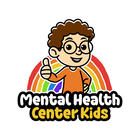Attention Deficit Hyperactivity Disorder (ADHD) is a condition that makes it difficult for kids to focus, sit still, and control their impulses. Medication helps, but according to experts, kids do best when treatment also includes other approaches, like therapy and skills training.
This study looked at how mindfulness programs, which teach kids to pay attention to the present moment in a calm, non-judgmental way, might improve ADHD symptoms. Researchers reviewed studies from around the world that tested mindfulness in children and teens with ADHD.
Based on the results, more than half of the studies reported improvements in hyperactivity, inattention, or impulsive behaviors. This research matters because mindfulness can become a valuable tool to help kids with ADHD succeed at home, in school, and within their friendships.
Understanding the Research
The researchers carefully followed a plan to make sure their study was fair and reliable. They registered the review in an international database and used official research guidelines (called PRISMA) so the process would be clear and organized.
They searched four big research databases — PubMed, Cochrane Library, PsycINFO, and Scopus — for studies that were published between the years 2000 and 2022. They used keywords related to ADHD and mindfulness, and made sure they included studies about children and teens under 19 years old who had been diagnosed with ADHD.
To be included, a study had to use a mindfulness program (like mindfulness-based stress reduction or mindfulness-based cognitive therapy) that lasted at least 8 weeks. Studies also needed to measure ADHD symptoms or related outcomes, like sleep, anxiety, or attention.
Finally, they checked the quality of each study with special tools that identify bias (mistakes or weaknesses that might affect results).
The researchers found mixed but mostly positive results. While not every study showed big improvements, many studies reported that mindfulness helped reduce ADHD symptoms.
Here’s a breakdown of the main findings:
- Six studies showed improvements in hyperactivity and inattention.
- Five studies showed reductions in impulsivity.
- Programs that met several times each week were more successful. A schedule of twice weekly or more produced better results than once-a-week programs.
- Programs based on Tai Chi also showed benefits. This might be because the gentle movements and focus on breathing help kids feel calmer.
- Programs where parents joined in or supported their child’s mindfulness practice usually showed better results.
Practical Strategies for Parents and Caregivers
Awareness is the first step in helping children with ADHD practice mindfulness. You can get started by noticing your child’s moods, energy levels, and triggers throughout the day. At the same time, you can teach your child to check in with themselves. From there, you can introduce simple mindfulness practices.
Here are some tips that will help:
Start with mood check-ins
Be sensitive to how ADHD can affect your child’s emotions. Kids with ADHD can struggle with self-esteem, frustration, or regulating their feelings, and this can show up as mood swings.
You can help teach your child to notice their own mood by asking questions like: How are you feeling right now? or What emoji face would match your mood right now?
Practice mindful breathing together
Mindful breathing is when you pay close attention to your breath — by noticing each inhale and exhale — in a calm, slow way. This helps children with ADHD improve attention because it trains their brains to focus on one thing at a time.
To do it together, sit side by side or face each other. Take a slow breath in through your nose, counting to three, and then breathe out through your mouth, counting to three again. You can pretend you’re smelling a flower while breathing in and blowing out a candle while breathing out. See our guided breathing exercises for more ideas
Praise your child for practicing mindfulness
Kids with ADHD don’t always get praise for the things they try, and that can make them feel frustrated or unnoticed. This is why when you notice and celebrate their efforts — like taking a few mindful breaths or paying attention during a short exercise — it means a lot to them.
This is called positive reinforcement, and it helps your child feel proud, motivated, and more likely to keep practicing mindfulness.
According to the researchers, findings from mindfulness studies can guide professionals to make plans that fit each child’s unique strengths, challenges, and needs.
Explore our ADHD Worksheets and Coping Skills Worksheets to help your child or teen manage their symptoms and learn strategies for mindfulness and emotional regulation.





















































